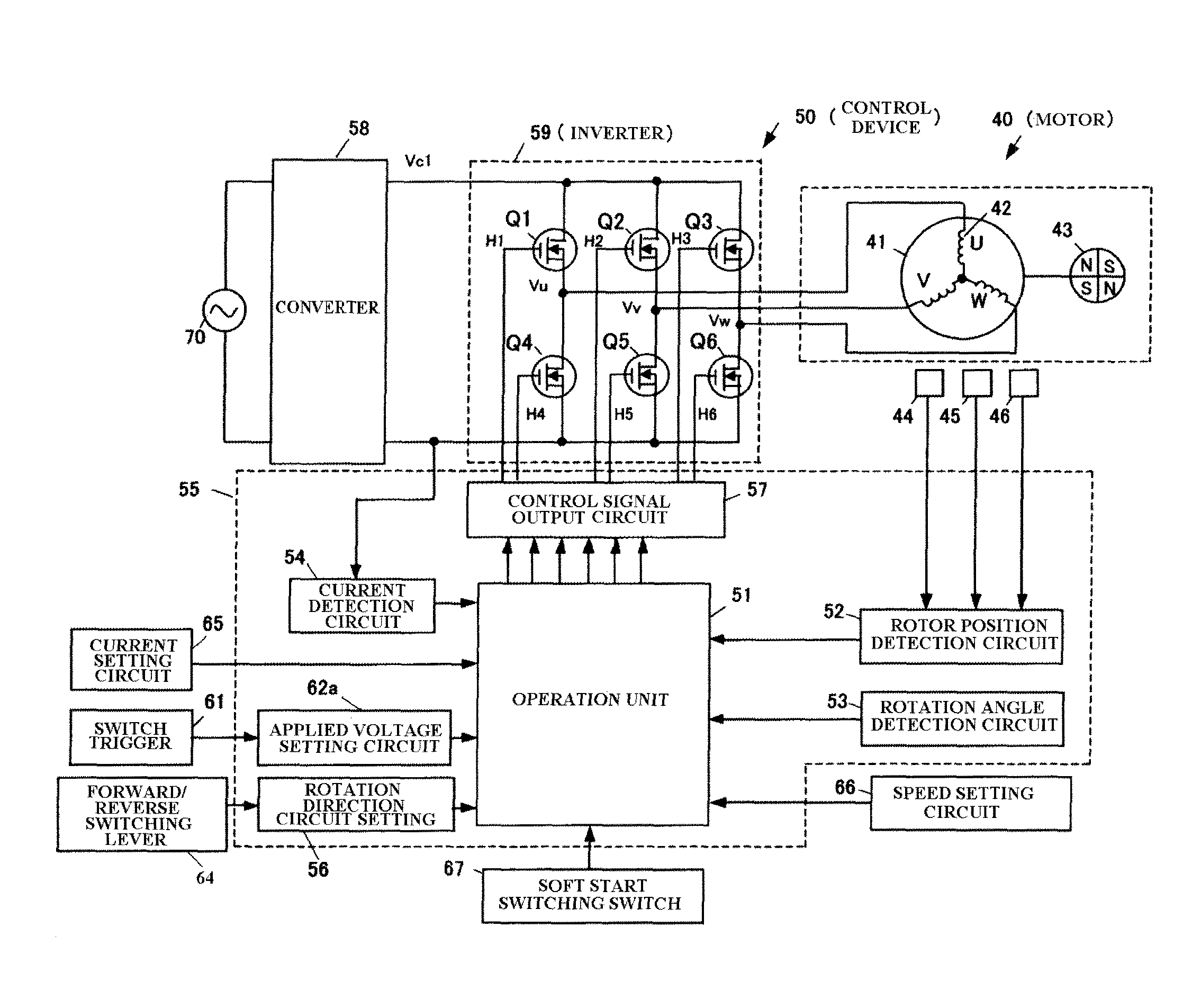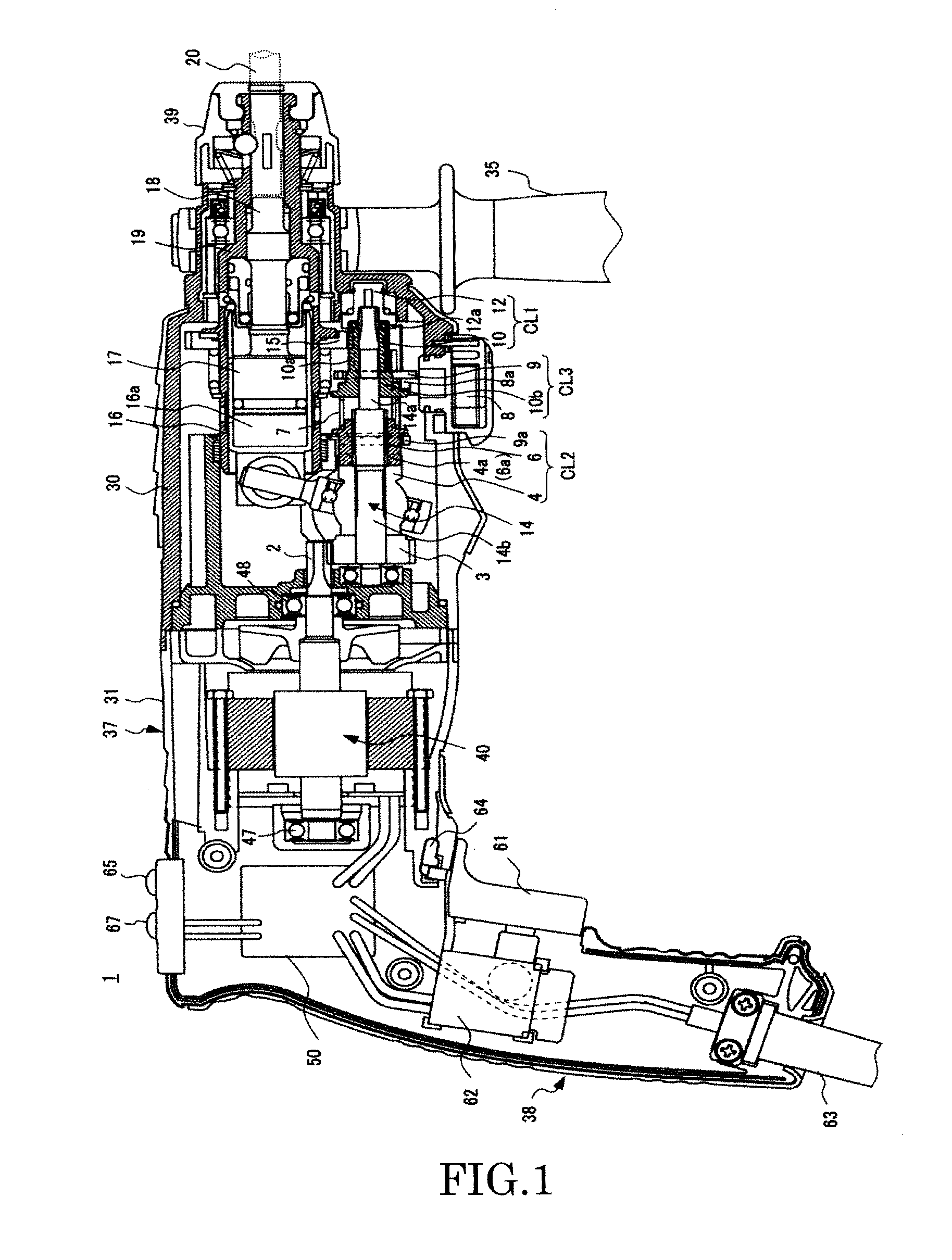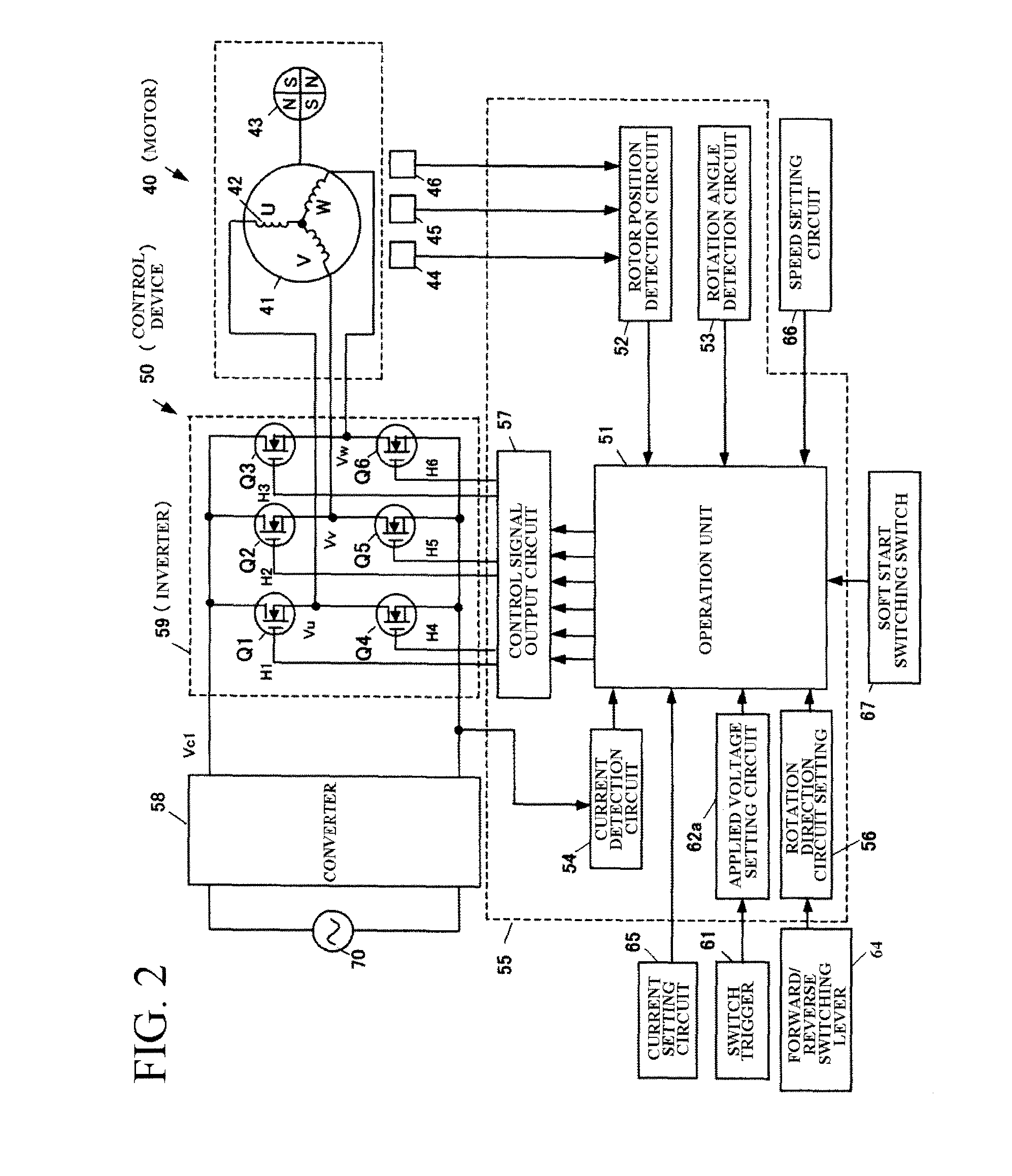Electric boring tool
a technology of electric boring and electric motor, which is applied in the direction of manufacturing tools, portable power-driven tools, drilling machines, etc., can solve the problem of easy damage in the vicinity of an opening for a hole, and achieve the effect of preventing or easing damag
- Summary
- Abstract
- Description
- Claims
- Application Information
AI Technical Summary
Benefits of technology
Problems solved by technology
Method used
Image
Examples
first embodiment
(First Embodiment)
[0032]FIG. 1 is an overall structural view showing the electric boring tool of a first embodiment of the present invention applied to a hammer drill, FIG. 2 is a block diagram of a control device when an electric motor that drives the hammer drill is a brushless motor, and FIG. 3 shows a flowchart of control of the control device for the hammer drill illustrated in FIG. 2.
(Overall Configuration of the Hammer Drill)
[0033]First, an explanation is given of the overall configuration of a hammer drill of the first embodiment of the present invention with reference to FIG. 1 and FIG. 2.
[0034]As illustrated in FIG. 1, a hammer drill 1 includes a tool body comprised of a body housing 37 extending from one end (left end in the drawing) to the other end (right end in the drawing) along the same direction (horizontal axial direction) as an axis of rotation of the brushless motor (DC motor) 40, and a handle housing 38 descending vertically from the body housing 37. A tip tool ...
second embodiment
(Modified Example of Second Embodiment)
[0088]It is possible to use a strain sensor utilizing the characteristics of change in pressure versus change in resistance of a semiconductor element or the like instead of using the acceleration sensor 68 for detecting vibration occurring in the second embodiment. An example illustrated in FIG. 9 illustrates an example where an electric boring tool detects stress (strain) occurring at the intermediate shaft 14 as a result of locating a strain sensor 68a in the vicinity of a bearing of the intermediate shaft 14 constituting the power transmission mechanism. Stress to be detected by the strain sensor may be any stress that occurs in a predetermined position in the power transmission mechanism. Stress occurring in the power transmission mechanism is detected by the strain sensor. It is therefore also possible to obtain the same results as for using the acceleration sensor when the strain sensor is used. Other explanations for the second embodime...
PUM
| Property | Measurement | Unit |
|---|---|---|
| electrical angles | aaaaa | aaaaa |
| length | aaaaa | aaaaa |
| diameter Ds | aaaaa | aaaaa |
Abstract
Description
Claims
Application Information
 Login to View More
Login to View More - R&D
- Intellectual Property
- Life Sciences
- Materials
- Tech Scout
- Unparalleled Data Quality
- Higher Quality Content
- 60% Fewer Hallucinations
Browse by: Latest US Patents, China's latest patents, Technical Efficacy Thesaurus, Application Domain, Technology Topic, Popular Technical Reports.
© 2025 PatSnap. All rights reserved.Legal|Privacy policy|Modern Slavery Act Transparency Statement|Sitemap|About US| Contact US: help@patsnap.com



